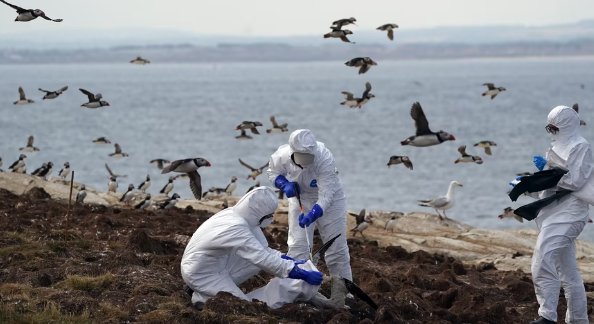Scientists are closely observing the recent outbreak of the Avian Flu (H5N1), paying particular attention to its behavior. Typically, this virus targets domesticated birds such as chickens and ducks, spreading rapidly in environments where these birds are densely populated. The recent surge in egg and poultry prices can be attributed to H5N1, which has decimated approximately 90% of the production flocks in the United States.
Researchers at St. Jude Children’s Research Hospital have been diligently tracking the movement and evolution of this virus. As it has spread, the virus has acquired new genetic characteristics, enabling it to now infect wild birds and mammals. This novel form of the virus has caused the death of hundreds of thousands of wild birds. Scientists have observed its global reach, affecting various species across five continents, leading them to classify it as a “panzootic” or an animal pandemic.
The Centers for Disease Control (CDC) has officially verified that the current risk of H5N1 transmitting to humans is extremely low, although not entirely impossible, due to the virus’s potential for genetic adaptation. Individuals who directly handle infected birds face a higher level of risk. It is crucial to adhere to the proper guidelines provided by the CDC, and individuals should undergo monitoring for a period of 10 days after exposure.
Efforts are being made to combat H5N1, including the implementation of measures to track the virus. The aim is to provide early warnings to poultry farmers so that they can enhance their biosecurity measures. Monitoring the virus in the wild bird population presents greater challenges, but certain programs, such as iNaturalist, enable citizens to contribute. Birdwatchers utilize this program to report instances of sick or deceased birds, and the gathered information is then shared with relevant agencies to aid in tracking the virus’s location and evolution.
While backyard flocks are not entirely immune, they generally exhibit greater resilience compared to chickens raised for large-scale production. This difference can be attributed to the genetic makeup of the birds. Mass-produced chickens possess a tightly packed genetic code, which makes them more susceptible to the virus, leading to rapid spread and high mortality rates. On the other hand, ordinary backyard flocks tend to exhibit more genetic variation, making them relatively more resistant and resilient to the virus’s effects.








